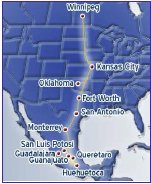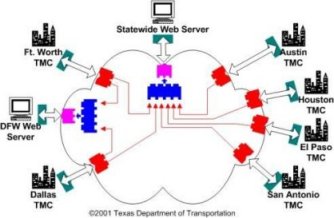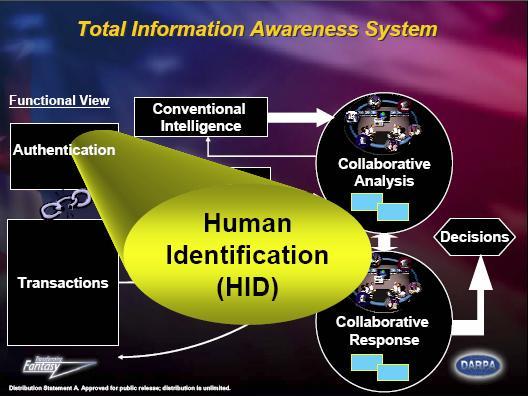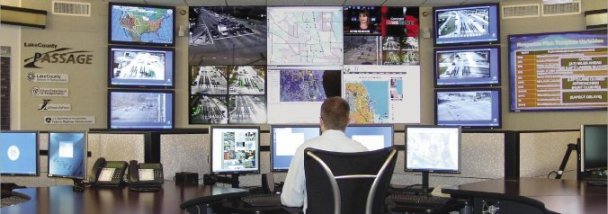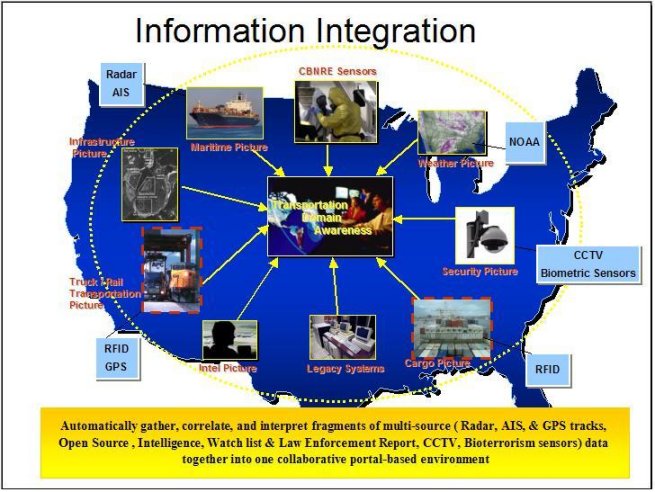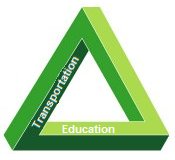The Trojan Triangle
Trojan horses need roads to roll in on - and they need triangular corrals. The Intermodal Surface Transportation Efficiency Act of 1991 (ISTEA) was the initial authorizing legislation to accommodate the Trojans. It's important to understand some key elements of transportation legislation that was passed in the 1990's because it was transformational in terms of moving from an industrial, capitalist economy to a centrally planned economy of "political capitalism" including the funding of a bottom-up revolution. Political capitalism for these purposes is better known as cronie capitalism. The politically connected choose the winners and losers. The choice of winners and losers is the strategy for revolution and it is the underclass that is selected to be the winners. The dislocations of the middle class are symptomatic of the decay of the current political system. The change in power base is concurrent with increasing corruption of and incompetence in the system.
The following is Section 2.
Declaration of Policy.
SEC. 2. DECLARATION OF POLICY: INTERMODAL SURFACE TRANSPORTATION EFFICIENCY ACT.
It is the policy of the United States to develop a
National Intermodal Transportation System that is economically efficient
and environmentally sound, provides the foundation for the Nation to
compete in the global economy, and will move people and goods in an
energy efficient manner.
The National Intermodal Transportation System shall consist of all
forms of transportation in a unified, interconnected manner, including
the transportation systems of the future, to reduce energy
consumption and air pollution while promoting economic development
and supporting the Nation's preeminent position in international
commerce.
The National Intermodal Transportation System shall include a
National Highway System which consists of the National System of
Interstate and Defense Highways and those principal arterial roads which
are essential for interstate and regional commerce and travel, national
defense, intermodal transfer facilities, and international commerce and
border crossings.
The National Intermodal Transportation System shall include
significant improvements in public transportation necessary to achieve
national goals for improved air quality, energy conservation,
international competitiveness, and mobility for elderly persons, persons
with disabilities, and economically disadvantaged persons in urban and
rural areas of the country.
The National Intermodal Transportation System shall provide improved
access to ports and airports, the Nation's link to world commerce.
The National Intermodal Transportation System shall give special
emphasis to the contributions of the transportation sectors to increased
productivity growth.
Social benefits must be considered with particular attention to the
external benefits of reduced air pollution, reduced traffic congestion
and other aspects of the quality of life in the United States.
The National Intermodal Transportation System must be operated and
maintained with insistent attention to the concepts of innovation,
competition, energy efficiency, productivity, growth, and
accountability. Practices that resulted in the lengthy and overly costly
construction of the Interstate and Defense Highway System must be
confronted and ceased.
The National Intermodal Transportation System shall be adapted to ``intelligent vehicles'', ``magnetic levitation systems'', and other new technologies wherever feasible and economical, with benefit cost estimates given special emphasis concerning safety considerations and techniques for cost allocation.
The National Intermodal Transportation System, where appropriate, will be financed, as regards Federal apportionments and reimbursements, by the Highway Trust Fund. Financial assistance will be provided to State and local governments and their instrumentalities to help implement national goals relating to mobility for elderly persons, persons with disabilities, and economically disadvantaged persons.
The National Intermodal Transportation System must be the centerpiece of a national investment commitment to create the new wealth of the Nation for the 21st century.
On September 25, 1961, John F. Kennedy gave a speech at the United Nation calling for the complete disarmament of the United States and Soviet Union. The next day, September 26, 1961, Kennedy signed Public Law 87-297, "Arms Control and Disarmament Act". In the over fifty years since, our government and military leaders have been disarming our country - and looting it at the same time. We were funding a military that was being dismantled in the United States - and building a military offshore offering American citizenship for military service.
Conversion of Defense Industries
According to documentation, the plan for disarmament of the United States included plans for conversion of defense industry corporations toward civilian purpose allegedly to avoid unemployment for the highly skilled workforce. On March 11, 1993, Bill Clinton gave a speech to the Westinghouse Electronic Systems Group in Linthicum, Maryland in which he explains the game plan. It's interesting not only because of the speech, but also because of the number of power players who were present for it. Click HERE for excerpts from the speech and a link to the entire speech.
Even though Clinton announced the plan for military logistics and surveillance technology to be turned toward domestic civilian purpose in 1993, the planning for high tech highways began several years before with a mandate by the Federal Highway Administration for regional transportation planning. I've documented it fairly extensively in previous work. Links and excerpts can be found by clicking HERE.
The Intelligent Vehicle Highway System Plan corresponding to the ISTEA legislation was published in 1992. The following is an excerpt:
"The mission of the IVHS community in the U.S. - composed of all levels of government; the automotive, electronic, communications, and information industries; and academia - is first, to improve surface transportation by deploying IVHS technology broadly throughout the nation and, in cooperation with Mexico and Canada, throughout North America, and second, to develop a U.S.-based IVHS industry to provide technology in the U.S. and abroad." 24
The ISTEA of 1991 legislation combined the concepts of intermodalism with military satellite surveillance and tracking technology with Government and Private Sector Information Systems for a "seamless web" intermodal system of transportation to facilitate international trade. But that's not all it did. The following are excerpts from a letter written by Transportation Secretary Skinner concerning the ISTEA legislation of 1991. Note the restrictions on toll roads are removed. In effect, they were authorizing the privatization of our highways which was why the Spanish firm Cintras was trying to get a long term lease on the Trans-Texas Corridor to make it a toll road. One does not have to be a military strategist to see the plan unfolding.
The provisions of
the Act reflect these important policy goals. Some of the major features
include:
A National Highway System (NHS), consisting primarily of existing
Interstate routes and a portion of the Primary System, is established to
focus Federal resources on roads that are the most important to
interstate travel and national defense, roads that connect with other
modes of transportation, and are essential for international commerce.
New technologies, such as intelligent vehicle highway systems and
prototype magnetic levitation systems, are funded to push the Nation
forward into thinking of new approaches in providing 21st Century
transportation.
The private sector is tapped as a source for funding transportation
improvements. Restrictions on the use of Federal funds for toll
roads have been relaxed and private entities may even own such
facilities.
Intermodalism
Definitions:
Intermodal - the connection point between two modes of transportation for the same trip
Intermodalism - A system designed around the concept of intermodal efficiency for all modes of transportation - truck, train, air, ship, bus, vehicle, etc.
According to Wiki, Delta Airlines pioneered the hub and spoke system in 1955 in an effort to compete with Eastern Airlines.
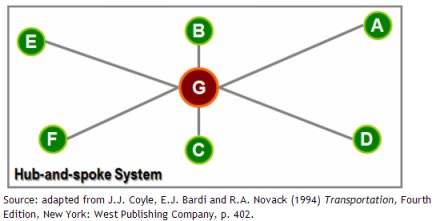
Hofstra University - Geography of Transport Systems
Zoning
Zoning means a bounded area that is defined for a specific use or purpose. Most commonly, zoning is thought of as bounding areas for residential and business use, but it's not only that. Our national parks for example are areas zoned for highly restricted use and limited development. Zoning can also be a logical overlay on existing zoning rules. For example, an economic development zone is an overlay on top of existing zoning. Each zoning layer has it's own set of rules, options and constraints.
The Intermodal Surface Transportation
Efficiency Act of 1991 (ISTEA) as the name states, was designed around
the idea of intermodalism which is by definition zoning.

The Kansas City SmartPort is an example of zone designation at an intermodal transportation hub. Notice that it says "Supply Chain Centered". The transportation hubs are logistics centers designed for the global supply chains operators. These ideas were sold to Congress on the basis of efficiency for American exporters but because of NAFTA and WTO agreements and global high speed telecommunications, all the incentives were for large corporations to leave the United States in a mass exodus to low wage countries. The net effect is that this transportation system is being built for importers of products into a country with a collapsing economy. And the technology being used on the highways is military surveillance with transportation hubs being command and control centers.
"An Inland Port is a physical site located away from
traditional land, air and coastal borders with the vision to facilitate
and process international trade through strategic investment in
multi-modal transportation assets and by promoting value-added services
as goods move through the supply chain."
Center for Transportation Research,
University of Texas

The KC SmartPort is an inland port. The concept of the inland port system was presented to the U.S. Trade and Development Commission as a development initiative for Mexico according to the 'Master Development Strategy - Phase 1 document. (Links added)
It is with great pride that the North American International Trade Corridor Partnership (NAITCP) presents the North American Inland Port Network (NAIPN) to the United States Trade and Development Agency (USTDA). The NAIPN project, fully consistent with the bilateral initiative Partnership for Prosperity (P4P) and with President Fox’s National Development Plan, envisions an integrated, efficient and secure network of inland ports specializing in the transportation of containerized cargo in North America.
Note: Fox's National Development Plan
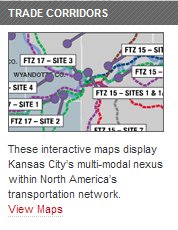
The National Transportation System includes all modes of travel and was designed to use the latest technologies for surveillance, tracking and recording movement.
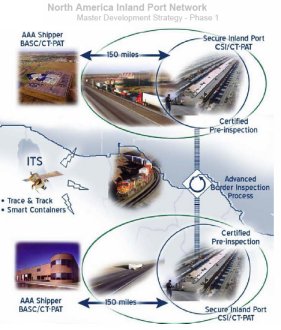
Transportation Equity Act for the 21st Century
TEA-21
“The Secretary shall carry out the Intelligent Transportation Systems program in cooperation with State and local governments and other public entities, the United States private sector, the Federal laboratories, and colleges and universities...” — TEA-21
TEA-21 was passed in 1998. The following are excerpts from a brochure produced by the U.S. Department of Transportation, Federal Highway Administration (emphasis added):
Transportation Equity Act...
The Intermodal Surface Transportation Efficiency Act of 1991, commonly referred to as ISTEA, began a transition in the United States from an era of highway construction to one of intermodal transportation management. During the ISTEA era, the ITS program was largely devoted to researching and developing ITS applications and building a foundation on which ITS deployment could take place.
Dear Readers... (letter from Christine M. Johnson, Ph.D. Director, ITS Joint Program Office
With the passage of TEA-21, the ITS program has fundamentally shifted from a program of research and development to one primarily focused on infrastructure deployment. More importantly, the direction from Congress is clear: technology will underpin the surface transportation system of tomorrow — and today. ITS has arrived!
To be blunt, your tax dollars were funneled to universities and under the heading of "research" where the students were used to develop the technology and applications for the Intelligent Transportation System that is a full spectrum dominance - surveillance, data collection, command and control system that is being deployed throughout the country - including rural areas.
Everything about this "Transportation System" has been under the radar so to speak because if the American people had understood what they were being asked to pay for, they rather obviously would have said emphatically NO with the movement to stop the Trans-Texas Corridor being proof of concept.
Everything about it is un-American. The legislation and the presentation of it has been lie on top of lie on top of lie. And more proof of concept is that while our economy is collapsing they continue to provide funding for this "Transportation System".
In the long-term, the vision of an integrated, intermodal intelligent transportation system could be thought of as a cooperative, interactive state between intelligent infrastructure and intelligent vehicles.

Intelligent infrastructure encompasses integrated transportation systems cutting across metropolitan and rural areas, as well as applications for commercial vehicle operations. ITS Infrastructure was the primary research focus under ISTEA because it was seen as a prerequisite to deployment. The investments made under ISTEA have resulted in an ITS program that is now focused on deployment.
TEA-21
Funding the Revolution


TEA-21 maintains the Disadvantaged Business Enterprises program, which is designed to ensure equal opportunity in transportation contracting markets and to address the effects of discrimination in transportation contracting. The program establishes a flexible 10 percent national goal for the participation of disadvantaged business enterprises, including small firms owned and controlled by women and minorities. As in the past, recipients will be responsible for setting their own goals based on local market conditions and the availability of qualified disadvantaged business enterprises. The use of quotas will not be permitted.
A new provision has been added to the DBE program, which seeks to reassure recipients that, in the event a final order of a Federal court finds the DBE program unconstitutional, their continuing eligibility for funding will not be affected.
Special Programs
Welfare to Work
Access to jobs. The Act creates a new program for Job Access and Reverse Commute Grants. The program is funded for FYs 1999-2003 with $400 million from the Mass Transit Account. An additional $350 million from the General Fund must be appropriated before it becomes available. The twofold purpose of the program is (1) to develop transportation services designed to transport welfare recipients and low-income individuals to and from jobs, and (2) to develop transportation services for residents of urban centers and rural and suburban areas to suburban employment opportunities. Emphasis is placed on projects that use mass transportation services.
Training. To provide job opportunities through training, a new provision in TEA-21 allows States the opportunity to reserve slots for welfare recipients in On-the-Job Training programs which lead to full journey level in skilled highway construction trades. As trainees, the welfare recipients also have access to supportive services programs that provide pre-employment counseling, orientation to the requirements of the highway construction industry, basic skills improvement, assistance with transportation, child care or other special needs, jobsite mentoring, and post-graduation follow-up.
On-the-Job Training/Supportive Services (OJT/SS)
TEA-21 significantly broadens the approved scope of OJT/SS assistance and training programs. Training which leads to transportation technology careers may now be funded under OJT/SS to prepare for rapidly expanding transportation employment opportunities in the 21st century. In addition, the Act authorizes the use of OJT/SS funds for Summer Transportation Institutes, including the American Association of State Highway and Transportation Officials (AASHTO) Transportation and Civil Engineering (TRAC) program, to encourage high school students to consider careers in a variety of transportation disciplines.
Innovative Finance
TEA-21 builds on the innovative financing initiatives begun under ISTEA to leverage Federal resources by encouraging private participation in the delivery of surface transportation infrastructure. These initiatives are intended to supplement the traditional Federal-aid grant assistance by increasing funding flexibility and program effectiveness. They establish pilot programs to test new finance mechanisms, and they extend or make permanent some of the tools already tested.
Direct Federal credit. The Act establishes a new program, under the Transportation Infrastructure Finance and Innovation Act (TIFIA), through which DOT can provide credit assistance on flexible terms directly to public-private sponsors of major surface transportation projects to assist them in gaining access to the capital markets. TIFIA provides a total of $530 million of contract authority over FYs 1999-2003, and authorizes the Secretary to collect fees from borrowers, to fund up to $10.6 billion of direct loans, loan guarantees, and lines of credit to support up to 33 percent of project costs....
State infrastructure banks. The Act establishes a new pilot program for State infrastructure banks (SIBs) in which four States—California, Florida, Missouri, and Rhode Island—may participate. In a manner similar to the original pilot program established under the NHS Designation Act, the Secretary may enter cooperative agreements with these States allowing them to capitalize their banks with Federal-aid funds authorized and apportioned in FYs 1998-2003. Unlike the initial pilot, however, the new program:
(1) Removes the 10 percent limit on capitalization with eligible program categories.
(2) Does not require separate Highway and Transit accounts, but does require separate accounting for Interstate and Rail projects.
(3) Applies Title 23 Federal requirements to all SIB assistance, including those repayments financed from non-Federal sources.
(4) Institutes a 5-year disbursement constraint for capitalization grants. The 35 other States approved for participation in the original NHS Act pilot may continue in that program under current guidelines.
Do you see it coming together strategically?
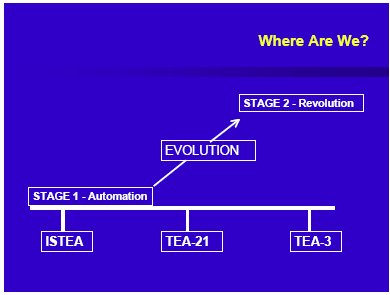
The above slide is from a Powerpoint presentation on the National Intelligent Transportation Systems Program Plan: A Ten Year Vision. Ten Year Vision - Full Report.
Vicky Davis
June 20, 2010

